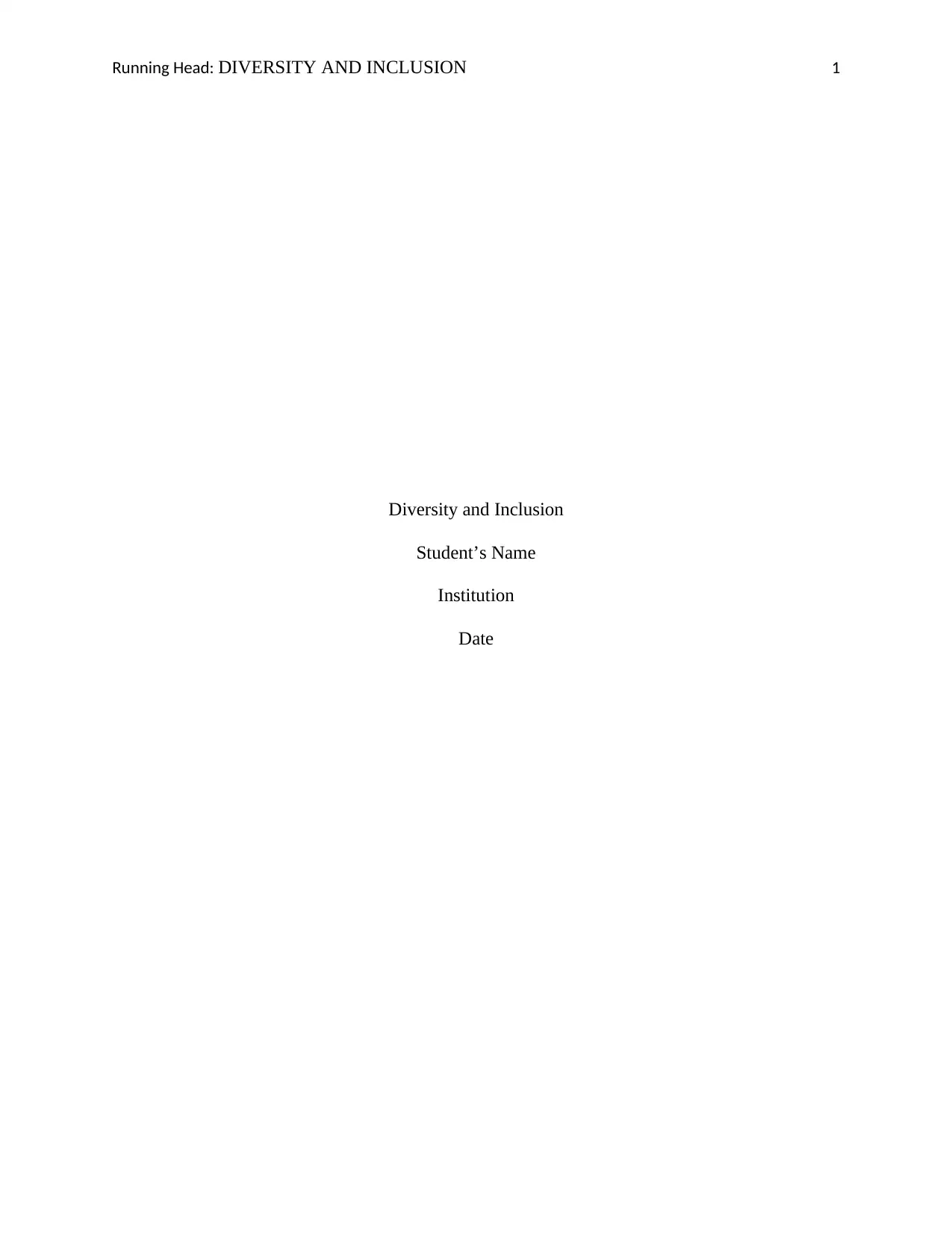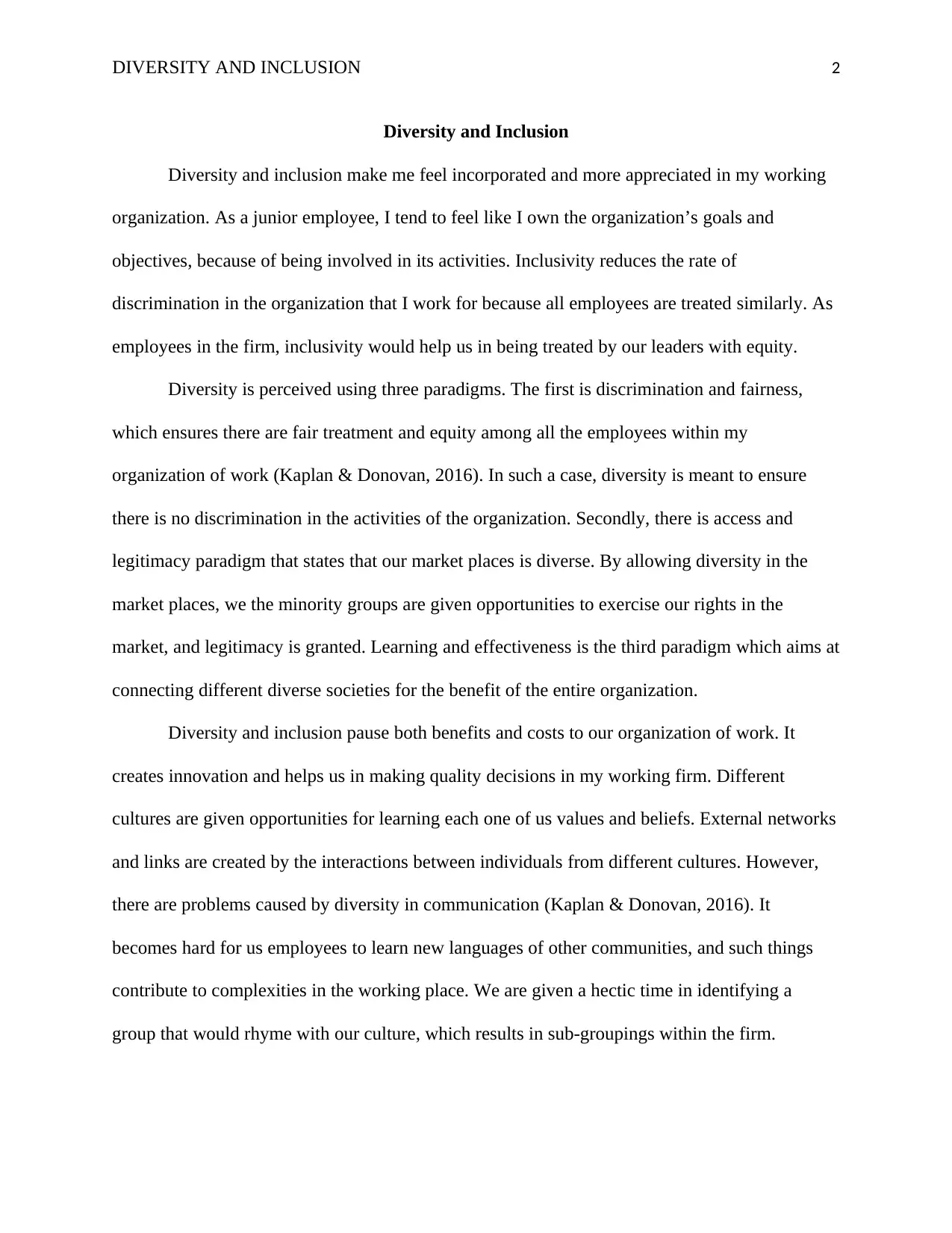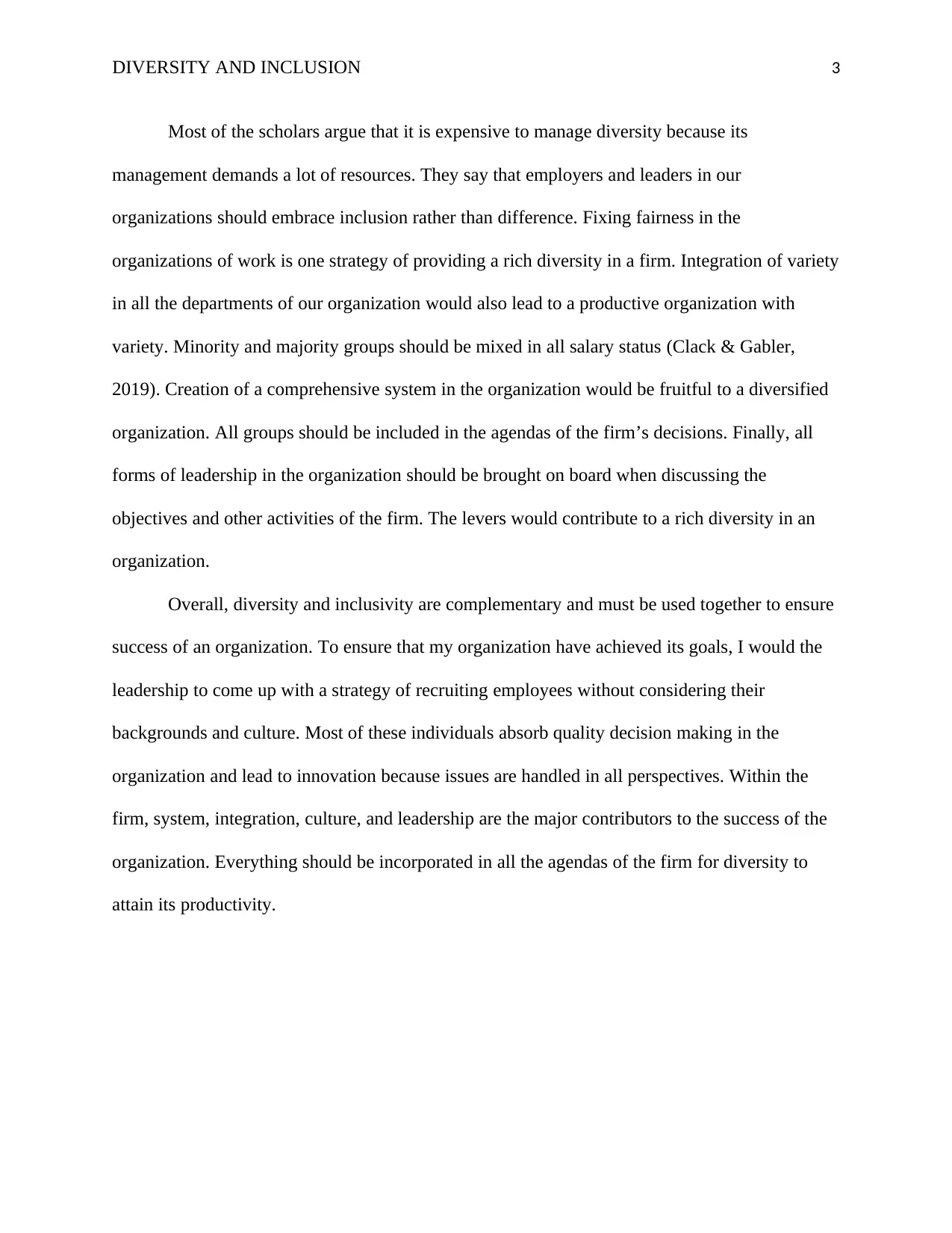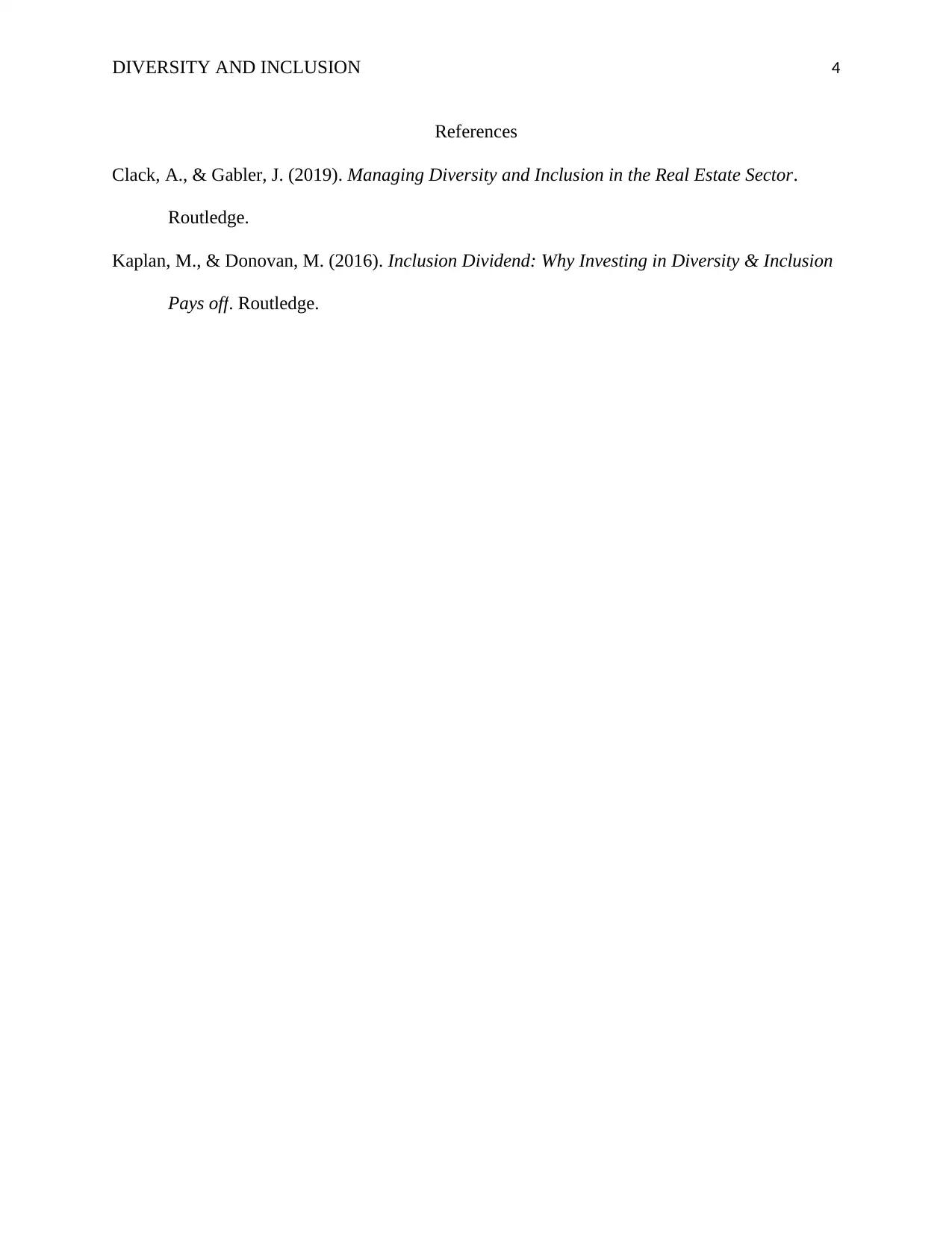Essay on Diversity and Inclusion: Leadership and Organizational Impact
VerifiedAdded on 2023/01/19
|4
|695
|61
Essay
AI Summary
This essay examines the critical roles of diversity and inclusion in the workplace, focusing on how leaders can foster environments where all employees feel valued, appreciated, and included. The essay explores the three paradigms of diversity: discrimination and fairness, access and legitimacy, and learning and effectiveness, highlighting their implications for organizational practices. It discusses the benefits and costs of diversity, such as increased innovation and communication challenges, and emphasizes the importance of creating an inclusive culture through strategies like equitable treatment, integration across departments, and inclusive decision-making. The author advocates for recruiting employees without regard to background and culture to promote innovation, with the ultimate goal of organizational success through system integration, culture, and effective leadership.
1 out of 4











![[object Object]](/_next/static/media/star-bottom.7253800d.svg)